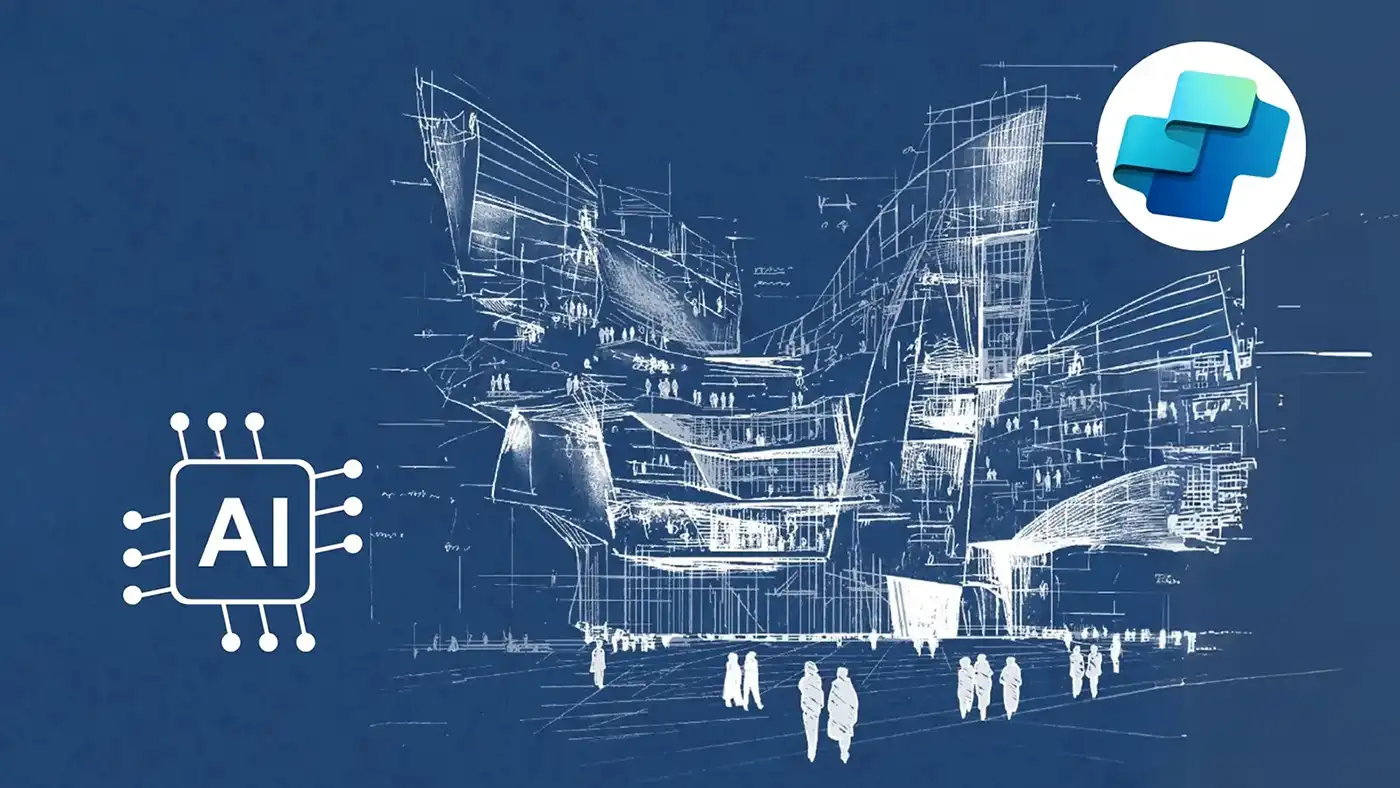Microsoft’s 2025 Work Trend Index report reveals how AI is transforming workplaces, highlighting crucial implications for organisations today.
Unsurprisingly, this latest research reveals an emerging gap between the performance of businesses that successfully adopt AI and those that don’t.
This article examines the latest research and offers practical insights from the report that you can implement to navigate this technological shift. You can access the full report here.
The Business Case for AI Implementation
The data presents a compelling case for action: 80% of the UK workforce lacks sufficient time, while 53% of leaders say productivity must increase.
With employees facing 275 interruptions daily – one every two minutes during working hours – traditional approaches to productivity are failing. Asking employees to work harder or longer is no longer effective. Something fundamental needs to change. With 85% of UK leaders calling 2025 a pivotal year to rethink strategies, AI-driven innovation must be at the forefront.
Beyond the Hype: What AI Can Deliver
While AI has generated considerable hype, the report shares concrete evidence of its impact. It points to companies classified as “Frontier Firms” – those with organisation-wide AI deployment and mature integration – that are seeing tangible benefits.
- 71% of Frontier Firm workers report their company is thriving (compared to just 37% globally)
- 55% say they can take on more work (versus 20% globally)
- 90% report having opportunities for meaningful work (versus 73% globally)
Perhaps most tellingly, these early adopters are less likely to fear AI will take their jobs. Only 21% express this concern compared to 38% globally, reflecting their confidence in AI as a career accelerator.
Frontier Firms are also defined by agent use and a belief that agents are key to realising ROI from AI.
The report highlights success stories where implementing AI agents capable of reasoning, planning, and acting to complete workflows autonomously was instrumental.
- Accenture – the professional services firm built an AI agent to help its clients automate and streamline past-due payments, speeding up collections and boosting bottom line performance.
- Bayer – R&D researchers save up to 6 hours per week with an AI agent working alongside them.
- Estée Lauder – The global beauty company built an agent to identify and consolidate consumer insights. Instead of sifting through individual reports, teams now pull up actionable intelligence instantly.
- Wells Fargo – the financial services company deployed an agent for 35,000 bankers across its branches. 75% of searches now happen through the agent, cutting customer query response times from 10 minutes to 30 seconds.

From Assistants to Colleagues: The Evolution of AI
The report identifies three phases in the journey toward AI integration:
- Start with AI assistants: Deploy tools such as Copilot that remove routine tasks and help employees work more efficiently.
- Progress to human-agent teams: Develop AI systems for specific tasks under human direction.
- Evolve to human-led, agent-operated processes: People set direction while teams of AI agents autonomously execute entire business workflows
The report finds that most organisations are transitioning between phases one and two. However, 87% of UK leaders expect agents to be integrated into their company’s AI strategy within the next 12-18 months. As one leader quoted in the report notes, “It’s a mindset shift…The unlock is when we realise AI is not a tool but a new kind of team member.”
Rethinking Organisational Structure
Perhaps most intriguing is how AI could transform organisational structures. The Work Trend Index report suggests the familiar org chart – built around functional expertise in departments – could evolve into what Microsoft defines as a “Work Chart.”
This dynamic model forms teams around goals rather than functions, with AI providing on-demand expertise that enables more fluid, project-based collaboration. It’s reminiscent of film production teams that assemble for specific productions and disband once complete.
This represents both a challenge and an opportunity for businesses with established hierarchies to become more agile and responsive.
In the report, leaders named customer service, marketing and product development as the top three areas for accelerated AI investment through to 2026. At Frontier Firms, workers were more likely than those at others organisations to use AI for marketing tasks (73% vs 55%), customer success (66% vs 44%) and data science (72% vs 54%).
The Human Element Remains Essential
When asked why they turn to AI instead of colleagues, employees cited capabilities people cannot provide, including 24/7 availability (42%), machine speed (30%), and unlimited idea generation (28%).
Despite these advances, the 2025 report emphasises that human judgement remains irreplaceable. Notably, using AI to avoid human traits – like impatience or reliance on judgement – ranked lowest, suggesting people value AI not as a replacement for human collaboration but as a complement.
Microsoft tends to downplay the correlation between AI implementation and job losses, instead preferring to emphasise the empowerment of people to be productive by eliminating repetitive tasks. While the 2025 Work Trend Index found that 31% of UK leaders were considering headcount reductions, a more significant number (46%) said scaling team capacity through digital labour is a strategic priority to drive ROI over the next 12 to 18 months.
Next Steps for Business Leaders
The evidence is clear: careful AI implementations yield measurable results that change how work gets done – and who does it.
So, what can your organisation do to increase competitiveness with AI? Here are five recommendations based on the 2025 Work Trend Index findings.
- Invest in upskilling: While 66% of leaders are familiar or extremely familiar with AI agents, the report found that only 34% of UK workers say the same. Upskilling employees is vital – according to this latest research, 49% of UK leaders said AI-specific training to bridge the skills gap and empower teams is their strategic priority. AI experimentation is essential, especially for newcomers. Give staff the tools and freedom to safely experiment with AI, unlocking creative solutions to drive measurable business success. Encourage sharing of AI successes to inspire others and promote wider adoption.
- Prepare for AI: This includes ensuring your organisation has policies in place that govern the use of AI. Data preparation means keeping your data updated and centrally stored for AI access. This includes classifying your data to ensure AI uses only necessary information, minimising the risk of data leaks.
- Start strategically: Conduct an audit to identify where AI can eliminate routine disruptions. We recommend starting by applying AI to small business problems, making tracking results easier to quickly gain tangible benefits.
- Focus on augmentation: Use AI to enhance human capabilities rather than replace them. Agentic AI is a new approach where agents can be deployed using Copilot Studio to replace time-consuming manual workflows that people typically don’t enjoy. As with any tech project, it’s best to start with focused use cases to map out what actions the agent should perform from the start to the end of the process, including what data and resources it should use to make decisions.
- Develop new metrics: The report highlights the need for a new human-agent metric that balances the need for human oversight with agent efficiency. For instance, how many agents are needed for which roles and tasks, and how many people are required to guide these? While efficiency gains are crucial, AI success should also be measured through improved outcomes.
The transition to AI-enhanced workplaces isn’t without challenges, but the evidence suggests the benefits outweigh the risks. For business leaders, the question shouldn’t be whether to adopt AI but how to do so thoughtfully and strategically.
Explore the full Microsoft 2025 Work Trend Index for deeper insights into AI-driven ROI opportunities.

